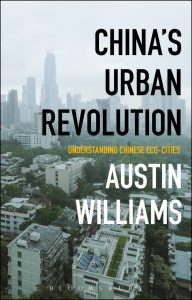Xi Who Must be Obeyed
Xi Jinping is a state-sanctioned, rubber-stamped, leader with no mandate. Where have we heard that before?
by Austin Williams

The National Congress of the Chinese Communist Party has just concluded in Beijing. Held every five years, this is the 20th Congress since the founding of the Communist Party of China in 1921.
For one week, between 16th – 22nd October, 2296 officials representing the 96 million Party members gather in the Great Hall of the People in a display of what the China Daily newspaper calls the greatest display of “intra-party democracy in action.” It sets national policy goals, as well as electing the new Central Committee, the leadership body of the Chinese Communist Party. The Central Committee’s 376 members then elect the 25-strong, decision-making Politburo, with the seven-member Standing Committee above them, and Xi at the head.
The Congress has now concluded with 69-year President Xi Jinping confirmed in his position of power for an unprecedented third, five-year term. He is already being labelled “president for life” as there seems to be no stopping him. This has had a knock-on effect on the internal Committee structure of the Party which is traditionally the place where leaders-in-waiting are paraded. But with President Xi pledging to go on and on, there may be some frustration in the ranks of the young pretenders.
Of course, Chairman Mao was in charge for 27 years. But as a result, one of his later predecessors, Deng Xiaoping formulated the ten-year maximum rule so that no leader would be in power for longer than two terms. This constitutional timeframe was overturned in 2018, as Xi set the ground rules for his long-term investiture. Xi’s consecration as Chairman – or Helmsman (in a nod to Mao’s previous incarnation) will undoubtedly be nodded through at the National People’s Congress in March 2023.
In his opening speech to Congress, Xi repeated claims that China had eradicated poverty, combatted corruption (which coincidentally also removed significant opposition to his authority), and strengthened the military. This latter point was forcefully made when, in a clear reference to Taiwan, he declared that “We will continue to strive for peaceful reunification with the greatest sincerity and the utmost effort, but we will never promise to renounce the use of force, and we reserve the option of taking all measures necessary… Complete reunification of our country must be realized, and it can, without doubt, be realized!”
As far as we can tell, an invasion of Taiwan is not imminent given that China is watching events unfold in Ukraine and is keenly aware that Russia’s skirmishes have not been welcomed nor successful. Indeed, Xi expressed his “concerns” to Putin in a recent diplomatic meeting. The war in Ukraine, of course, is seldom shown on Chinese media for fear of exciting nationalist and sovereign voices internally.
But China’s militarisation takes other forms, and the Covid strategy continued to be an “all-out people’s war to stop the spread of the virus.” For example, in Chengdu in Sichuan Province in September even after a 6.8 magnitude earthquake, many families were not allowed out of their buildings for fear of Covid spread. To facilitate such restrictions, the extensive state monitoring networks that have been set up to control people’s movements and eavesdrop on their social lives permeate every aspect of life; and for many people, have become normalised.
But like President Xi’s reign, there seems no end in sight for his zero-Covid strategy. With growing anger and frustration, Xi recognised that there was clearly a need to rally support with references to “spectacular achievements through (the Party’s) great endeavours” and an appeal to the people’s “unwavering commitment and perseverance.” However, as the Congress got underway, large areas of Beijing were, yet again, being put under lockdown with one protestor draping banners over the capital’s Sitong Bridge with the slogans: “We want food, not PCR tests. We want freedom, not lockdowns. We want respect, not lies.”
Admittedly, one unintended consequence of such draconian lockdown practices has been that international criticism of China’s human rights abuses in Xinjiang have been put on the backburner. After all, it is difficult to criticise a government for locking up Uyghurs when it has spent nearly three years locking up everyone else.
The recent beating of a Hong Kong democracy activist in broad daylight on British soil at the Chinese consulate in Manchester is an example of China’s renewed confidence on the world’s stage and its ability to fend off criticism. For Xi, his extended term of office is necessary to fulfil his dream of the “great rejuvenation of the Chinese nation.” No civil rights activist, national separatist, disruptive protestor, or ambassadorial reprimand is going to put off that fateful day.
As it happens, the shenanigans of the last few weeks in the Tory Party have made it more difficult for UK commentators to criticise China’s lack of democratic mandate, its imperious relationship with the public, and its unsolicited imposition of a state leader.
Indeed, when China’s President Xi Jinping came into office ten years ago, the Conservative Party under Prime Minister David Cameron was riding high. Cameron had recently returned from a trip to China where he’d urged the Chinese to realise the supremacy of the Western model of government saying: “the better informed the British public is about the issues affecting our society … the easier it is, ultimately, for the British government to come to sensible decisions and to develop robust policies that command the confidence of our people.”
It all looks a little different now. Five Tory party leaders in six years (only two of whom will have been democratically elected) compares with China which has had five Party leaders since 1949… and, of course, just one “harmonious” party. East or West, it seems, the public are treated as an irrelevance.
END






